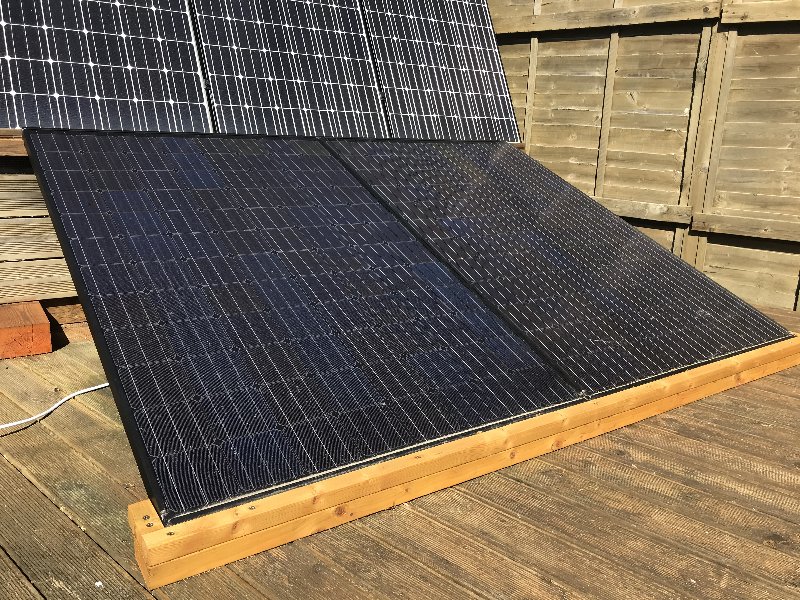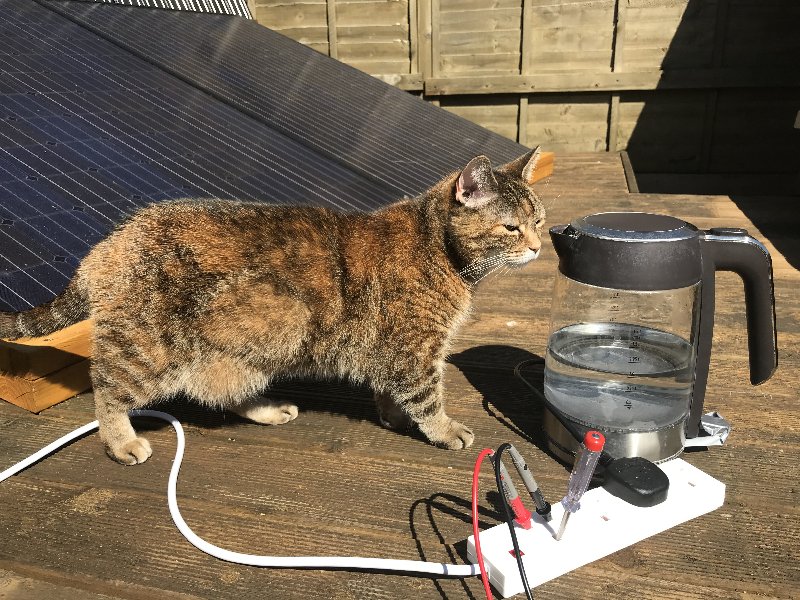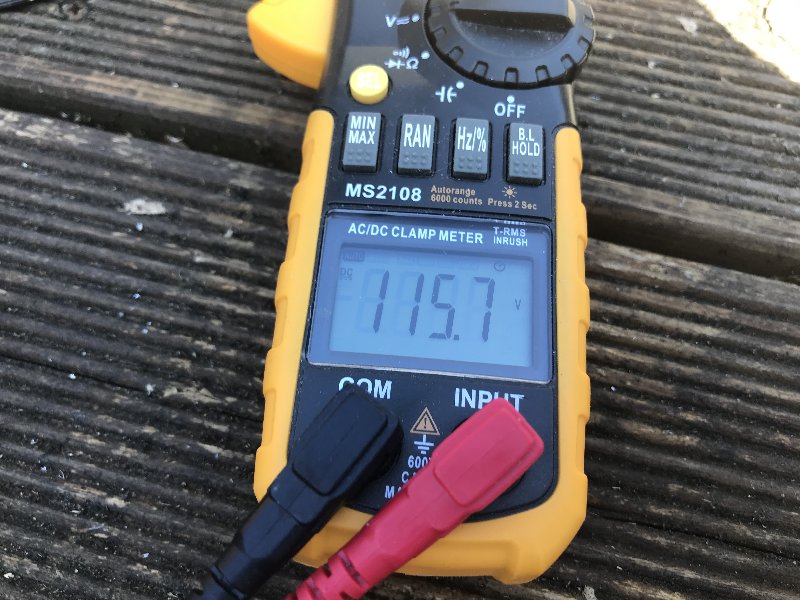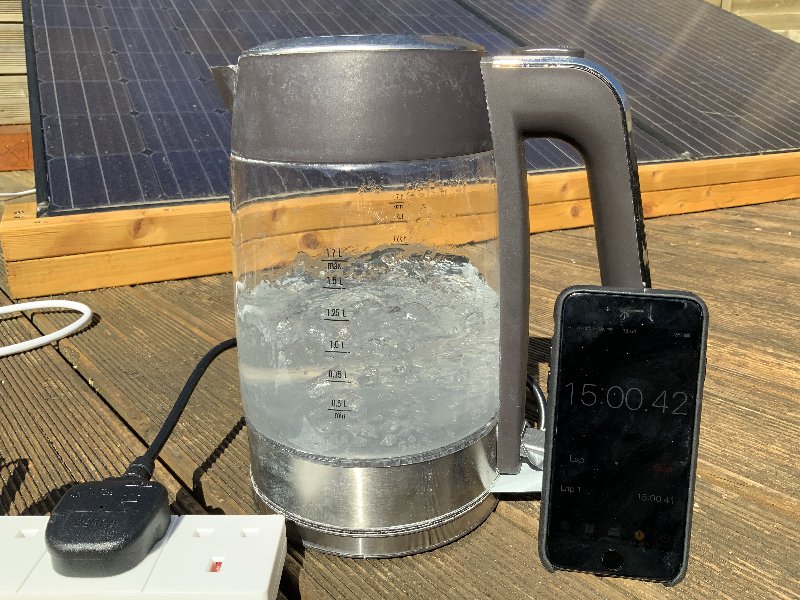Can you boil a kettle direct from a PV panel.
Posted: Mon Nov 21, 2022 7:22 pm
This is a resurrection of a lost experiment from the old place. There was talk many times in the past of directly connecting solar panels to an immersion heater or storage heater without any use of inverters. There were arguments for and against it and some didn’t think it would work at all.
The biggest issue of using DC direct from panels is the acing and welding together of thermostats and switches. But irrespective of that a few summers ago I had a go at connecting two solar panels directly to a kettle to see if it would boil.
I cut the plug off a socket extension lead and connected the live and neutral to a pair of MC4 solar connectors so I could directly connect to a pair of solar panels.
The pair of solar panels were 325W Panasonic with a Vmp of 59V and Imp of 5.5A. So a pair of them in series would give 118V with a current of 5.5A in full summer sun.

Without using an MPPT, the trick is to find a resistive load to best match the generating panels of 118V at 5.5A. Using Ohms law the resistance required to match the pair my panels was a resistance of 21.5 ohms. If I used NOCT parameters for the panels (more typical) the resistance works out at a little higher at 25 ohms.
My 220V 1.85kW kettle has a resistance of 26.1 ohms so should be a good candidate for the experiment. One problem is that the on/off switch of the kettle electrically latches on which would not work with DC so I had to tape the switch down.
My health and safety manager gave it a final check and made a comment that I had cut the earth wire off the extension lead, but I ignored that.

On load voltage was nearly 116V.

Onload current was 4.9A.

1 litre of water was boiling away nicely in 15 minutes.

The biggest issue of using DC direct from panels is the acing and welding together of thermostats and switches. But irrespective of that a few summers ago I had a go at connecting two solar panels directly to a kettle to see if it would boil.
I cut the plug off a socket extension lead and connected the live and neutral to a pair of MC4 solar connectors so I could directly connect to a pair of solar panels.
The pair of solar panels were 325W Panasonic with a Vmp of 59V and Imp of 5.5A. So a pair of them in series would give 118V with a current of 5.5A in full summer sun.

Without using an MPPT, the trick is to find a resistive load to best match the generating panels of 118V at 5.5A. Using Ohms law the resistance required to match the pair my panels was a resistance of 21.5 ohms. If I used NOCT parameters for the panels (more typical) the resistance works out at a little higher at 25 ohms.
My 220V 1.85kW kettle has a resistance of 26.1 ohms so should be a good candidate for the experiment. One problem is that the on/off switch of the kettle electrically latches on which would not work with DC so I had to tape the switch down.
My health and safety manager gave it a final check and made a comment that I had cut the earth wire off the extension lead, but I ignored that.

On load voltage was nearly 116V.

Onload current was 4.9A.

1 litre of water was boiling away nicely in 15 minutes.
